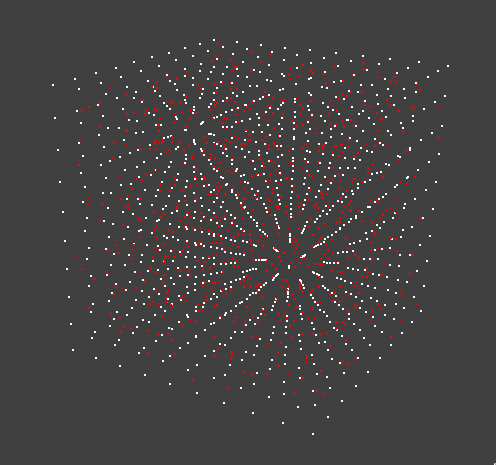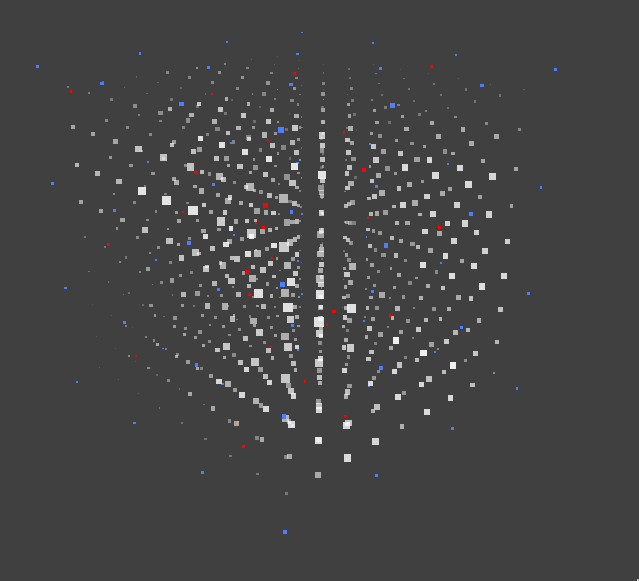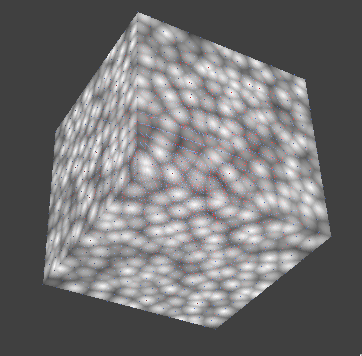After testing our Worley Noise algorithm in 2D, we extended it to work in 3D space. The computational demand of our algorithm was really high because we had to calculate the min_distance(every_pixel, every_random_worley_point).
In order to minimize the computations, we split up the cube into sub-sections and placed one random point in each sub-section. Now, every pixel has to check it’s distance against random worley noise points located in 26 adjacent sub-sections in addition it’s own section (total of 27 checks per pixel).

Red dots: Worley Noise
White dots: Cell boundaries
Red Dots: Worley Noise
White Dots: Density
Worley Noise
The biggest challenge was in blending cube edges as we replicated the Worley Noise. In short, for the sub-sections touching the outter-planes of the cube, we had to offset our worley noise points to the correct location in order to compute correct distances.
After some debugging, we were able to quickly replicate our Worley Noise texture successfully:

Compute Shader Limitation:
Initially we wanted to speed up the distance calculations by using a compute shader. Unfortunately after implementing a basic compute shader, part of our dev team was unable to run the project due to OpenGL 4.4 (required for compute shaders) incompatibility with Mac OS.
